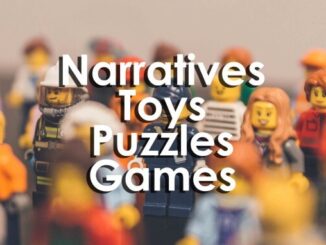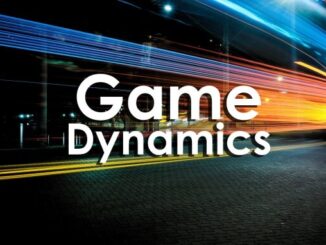
For most people there is a clear delineation between ‘Work’ and ‘Play’, and with it the sad assumption that ‘Play’ is enjoyable and voluntary, and that ‘Work’, being its polar opposite, is unpleasant, and an obligation that simply needs to be endured.
Is this situation unavoidable or would it be possible to make the experience of working feel more like playing by consciously ‘designing’ it? To be clear, what I am talking about here is far more than what currently goes into designing work – which usually stops at the writing of job descriptions, consideration of ergonomic/hygiene factors and creating processes around line-management.
The kind of design I mean would look more at how workers experience their work, considering how they are motivated and rewarded, the meaning they find in their work, how they can grow and progress in a role, and allowing them leeway (within the constraints of the role) to exercise creativity. Such design would also look at processes to smooth the path for workers to behave in ways that are beneficial to the organisation, and align the goals of the individual to the system they operate within.
There are disciplines which already encompass this kind of design User Experience (UX) Design, and Games Design, so what could we learn from these disciplines which could make work better?
Designing feedback in work
To take one single aspect, Feedback, which is one of the most important tools of people management, frequently (if not nearly always) fails to deliver what it could in an organisational setting. There are numerous feedback models – some awful, and some very good, which can be used to steer employees in the right direction, mentor them and help them grow, but none of these, however skilfully applied can compare with the efficacy of feedback in (well-designed) games.

Timeliness – in games, feedback is almost constant. There is a decision-action-feedback cycle which occurs with every move that is made. In Chess, you make a move, and the game gives you feedback in the form of your new position on the board, and the subsequent next possible moves, and relative positions of pieces, which you can now see. You are given further feedback by your opponent, whose own move is, at least in part, a reaction to yours. Video games give you feedback on your decisions by tracking your score, your remaining life points, your gold coins – the mechanisms are endless.
In work, you can often wait weeks or even months before receiving feedback on your decisions and actions. Some organisations even make you wait until an annual appraisal to tell you that you are on the wrong track, remove your autonomy by requiring that your goals and targets are set or approved by your manager, and miss out on the opportunity to use feedback as a constant facilitator for steady and constant progress.
What can games tell us?
So what are the design considerations we should use when designing the feedback mechanism in our games/work to be timely relevant and contextual? Ideally there should be two way learning here. Not only can employee experience designers learn from seeing how well-designed games work, but games designers should also be able to learn from good design of work.
One of the first considerations should be the level of support via feedback given to the worker/player. Too little and they may find it difficult to advance, too much and the engagement in the playing / working process will be lost. Players need to feel that the decisions and moves they are making within the game are autonomous. This is not only important for the engagement in the activity, but discovery provides valuable opportunities to create sticky learning. In an ideal situation, there should be enough flexibility in the system to monitor and customise the preferred level of support for any individual player/worker. Computer games do this well where feedback is based on game play stats (amount of ‘life’ left, progress towards next level) the level of performance expected from the player could be calibrated to their previous performance – a process of differentiation familiar to a classroom learning environment, and which could be profitably applied to the world of work. Arguably this is what personal appraisals are designed to do, but the necessarily infrequent nature of such a large-scale evaluation, renders them ineffective as a tool for consistent progress. How could frequent ‘micro-evaluations’ and goal/target adjustments (such as are implemented in games) be built into the design of your job? This, I believe, would necessarily mean that the employee would largely need to undertake self-evaluation – a change which in itself would increase autonomy and exercise of creativity.
Games mechanisms
So what measurements might you use? We can learn much from games here which contain progress measures of innumerable kinds – the feeling of constant forward momentum will support continued action. The actual form the measure will take can be tailored to individual requirements.
‘Are we nearly there yet?’ – another form of effective progress measure for keeping players on the straight and narrow, particularly effective for time bound or target-led goals
‘Streaks’ of activity – a measure of consistent action, for example, visiting the game daily and feeding in data can make it more likely for activity to continue, with players reluctant to ‘break the chain’, particularly if this has a strong graphic representation. (e.g. red crosses on a calendar).
Getting ‘better’ (or worse) – a clear definition of a future desirable state, along with a simple way of measuring ‘units of progress’ towards it.
Personal bests – a time honoured way of keeping players engaged. Imaginative design can move beyond the obvious here – so you don’t just get a PB for your highest number of action repetitions, or the best time for carrying out that action, but also because you have achieved your longest continuous streak.
Comparison with others – leaderboards and social sharing of achievement can be a powerful incentive for competitive types, and comparison with one’s own performance in previous events / time periods can provide a similar encouragement.
Awards and rewards – the lines between feedback and other games mechanisms can be blurred. For some people visible and concrete symbols of success are a powerful incentive for progress. Game ‘stuff’ like badges or the earning of in game currency which then can be used to buy virtual goods for use in the game
Levels and powerups – enhanced in-game capability or access to new content can be a powerful incentive to progress. Clear level boundaries for gaining these achievements also work well. As someone who has frequently stayed up ‘just one more hour’ to gain the capability to cast a more powerful fireball spell once I level up, I can attest to the lure of the level boundary.
These describe how these mechanisms work within games – what would be required to build these same mechanisms into a work setting?
- James Bore – The Ransomeware Game - 13th February 2024
- Ipsodeckso – Risky Business - 23rd January 2024
- Review – Luma World Games - 15th December 2023





Sarah, the Games Mechanisms list is very useful to provide focus on the critical success factors for a serious game.
Thanks Michael. I have a roladex (how old achool) of games mechanisms, cross-indexed by learning outcomes they can support and aspects like feedback they can be used to implement. I invariably end up digressing, but I find it a good starting point for design.